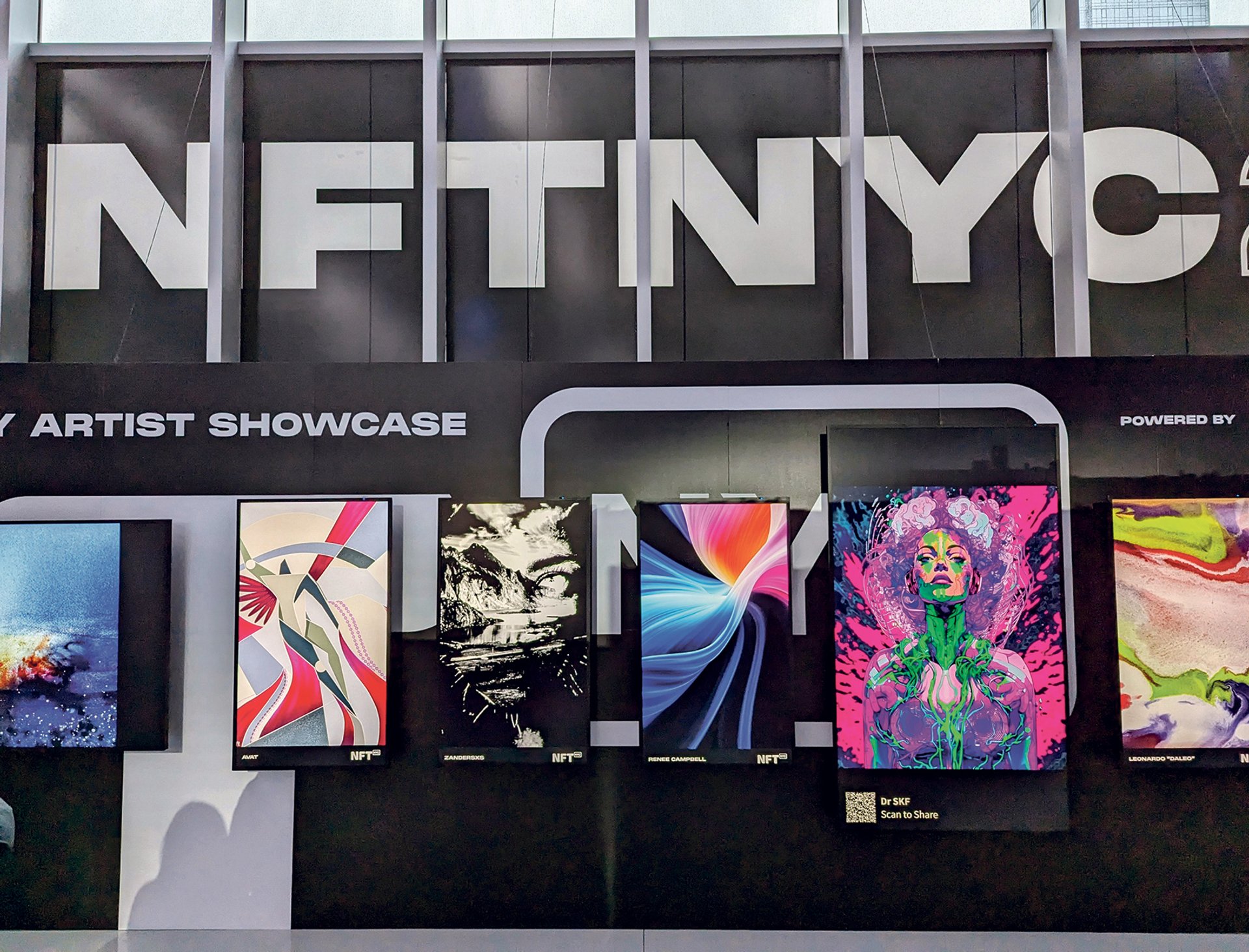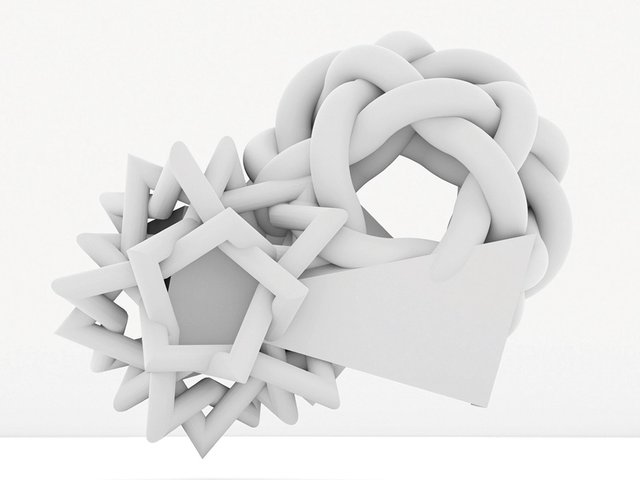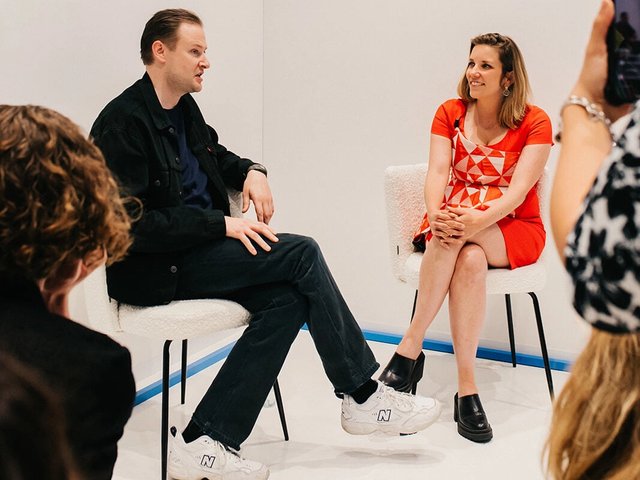Back in 2021, Jim Cramer, a former hedge fund manager and host of the CNBC programme Mad Money, seemed to sound the death knell for Bitcoin investing after the Chinese government cracked down on cryptocurrency mining (the term used for the creation of new units of bitcoin). “Sold almost all of my bitcoin. Don’t need it,” Cramer announced on the CNBC show Squawk on the Street. That was a year before the value of various cryptocurrencies, such as the stablecoins TerraUSD and Luna, as well as the multi-billion-dollar cryptocurrency exchange FTX, collapsed, and Bitcoin itself troughed 77% below its all-time high.
Story over? Hardly. Bitcoin and other forms of crypto have rebounded to new highs, and Cramer himself has reversed course, recently claiming that Bitcoin is “here to stay”.
What was called the “crypto winter” has ended, bringing a resurgence of interest in and prices for NFTs (non-fungible tokens), which include art images. “The hype and speculative frenzy that NFTs saw several years ago is gone,” says Ric Edelman, the founder of the Digital Assets Council of Financial Professionals, which helps financial advisers understand this newer realm of investing. “Prices are rebounding, trading volume has rebounded and we’re again seeing big tickets.”

Don’t believe the hype: the market may be moving away from its frenzied beginnings to become more focused on artistic value Florent Tournier
The market for NFTs took off in 2021, with museums, artists, new-to-the-market groups such as Yuga Labs (of Bored Ape Yacht Club fame), Dapper Labs (creators of CryptoKitties) and the National Basketball Association’s Top Shots, as well as celebrities such as Snoop Dogg, William Shatner, Damien Hirst and Lindsay Lohan minting their own blockchain-based digital assets, purchasable with crypto. The market for NFTs, recorded in blockchain platforms and marketplaces, reportedly reached $41bn in 2021, declining to around $21bn at the end of 2022, before losing an estimated 95% of its value in 2023.
Bernadine Bröcker Wieder, the chief executive officer of Arcual, a company with offices in Berlin, London and Zürich that uses blockchain technology “to facilitate a new and upgraded standard for secure transactions in the art market”, says that the “value of digital art purchased on NFT marketplaces was indeed inflated for a period of time, alongside the prices of cryptocurrency, thanks to the speculation brought on following the pandemic, and there was a pendulum swing backward in 2023”. She adds that “the activity on NFT marketplaces increased as well, probably due to the positive news on cryptocurrencies in the press”.
The art market’s interest in NFTs has matured, according to Mark Cuban, the owner of the Dallas Mavericks basketball team and an investor in OpenSea, one of the largest marketplaces for user-owned digital goods, which include collectibles, gaming items, domain names, digital art and other assets based on the blockchain. “It’s a lot more deliberate and collector driven,” Cuban says, adding that “people are less focused on immediate appreciation and more on enjoying the art itself”.
Others involved in the NFT world also take issue with the perception that this form of collectible is more hype than substance. “Our goal is to support artists represented by Pace Gallery in their investigations of new media,” says Ariel Hudes, the head of Pace’s NFT division, Pace Verso, which was established in 2021. “We’re not trying to increase [price] speculation. We’re doing this because we believe in the artists and in the work they are creating.”
Artistic value
Others make similar claims about the goal of assisting artists rather than feeding a frenzied market. Brian McAlister, the co-founder of Objkt.com, which claims to be the largest NFT marketplace on the Tezos blockchain, says that “our focus as a platform has always been on the artistic value and potential of digital art, not the speculative trends in cryptocurrency”. He adds that “as the speculation quietened down, genuine collectors and art enthusiasts remained looking for real value and artistic integrity. These collectors aren’t primarily driven by potential gains but are motivated more by a desire to engage in patronage and directly support the artists behind the work.”
Another major player in this space, Sunil Singhvi, the head of arts and culture at the London-based TriliTech (which works with entrepreneurs and artists to create projects on the Tezos blockchain), says that “there was a huge amount of energy and speculation around NFTs during the pandemic”, with some buying them “as an investment piece or as a launch to the art world”. Many of those pieces are now “less valuable than they were two years ago”. However, he says TriliTech continues to work with artists whose principal goal is to “find an audience”, and for many artists and collectors the aim is “belonging to a group of people” with similar tastes and interests.
The market for artistic NFTs has not gone into hibernation. Sotheby’s has continued to hold digital art auctions, including a small sale of Bitcoin ordinals (which operate in a similar way to NFTs) in December and a larger one in January that fetched a total of $1.55m, as well as a generative art programme that began this past July with the sale of works by Vera Molnár, a Hungarian artist who died in December aged 99, which earned $1.2m. (Generative art refers to algorithmically determined computer-generated artwork.) The auction house’s next generative art sale will take place in June and feature the renowned French sculptor Bernar Venet, who will launch his very first digital art project with this auction.
Michael Bouhanna, a contemporary art specialist and head of digital art and NFT sales at Sotheby’s, says that a few galleries “have been impactful in the NFT market”, citing Gagosian and Pace, but that Sotheby’s and Christie’s, its arch rival in the auction sector, have been “leading the market, making first-market sales”. He points to “a shift in collectors” for NFTs in the past year to buyers who are “more mature, more educated”, as opposed to the ones who entered the market in 2021, which became “a field for speculators who were more interested in making a quick profit”.
Auction house endorsement
Both Sotheby’s and Christie’s accept payment for digital art in crypto and, occasionally, for physical works of art. At Sotheby’s, Bouhanna estimates that around half of NFT buyers pay in crypto (although it is rare that physical art is paid for in that way), while this is a “relatively infrequent occurrence”, according to Nicole Sales Giles, the director of digital art sales at Christie’s, “but we are happy to do it” if a collector asks. “Many digital art buyers are strong believers in the future of crypto, and some prefer to settle in fiat [government-backed currency] and hold onto their crypto for that reason,” Sales Giles says. On the auction house’s on-chain sales platform, Christie’s 3.0, “100% of payments and settlements are automatically in ethereum, as the platform is fully on-chain”. She adds that crypto is not accepted as payment in any other Christie’s department.
Bitcoin and other cryptocurrencies have gained broader acceptance in the financial sector this year, as the US Securities and Exchange Commission (SEC) approved the launch of several bitcoin exchange-traded funds (ETFs) in January, allowing shares in trusts holding the cryptocurrency to be bought and sold on SEC-regulated exchanges. Franklin Templeton Investments, which manages an asset portfolio worth $1.3 trillion, launched the first on-chain money market fund in 2023, and BlackRock, the largest asset manager in the world, unveiled a tokenised fund of its own in March. Both companies, along with Fidelity, which launched its own bitcoin fund in January (with assets of $6.9bn), and others, “believe that tokenisation will revolutionise the financial services industry over the next five years”, Edelman says. “The era of the ‘crypto bros’ is rapidly ending, and while they succeeded in getting 5% of the world’s population to engage in crypto, the financial services industry will get the other 95% involved.” He adds: “We project that independent advisers will place $150bn into bitcoin over the next two years.”
Cryptocurrencies have been and remain more risky than government-backed money, such as US dollars and euros. As they are created through computers, hacking—particularly enabled by quantum computing that could crack encryption—has the potential of leading to chaos in digital financial markets. Additionally, flaws in the computer code, which have emerged twice with Bitcoin since 2010, may increase the volatility of the price of the coins.






